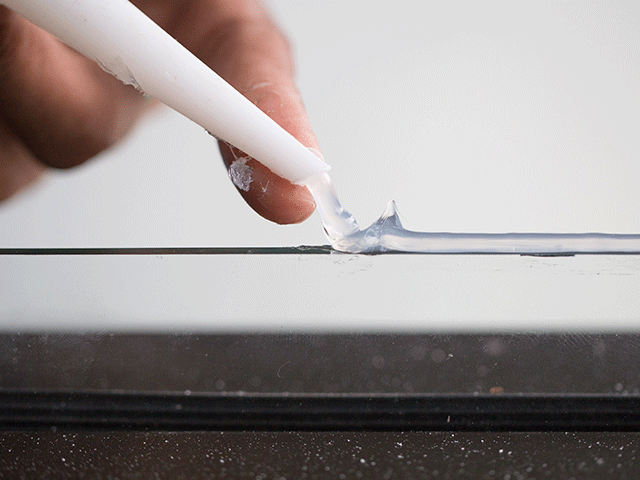- Industrial
- Aerospace
- Assembly
- Automotive
- Construction Materials (Industrial)
- Flexible Packaging
- General Transportation
- Rigid Packaging
- Tape & Label
Mar 20, 2018 - 10 min
FOUR REASONS FOR ADHESIVE FAILURE

Using adhesives offers manufacturers many benefits, including:
- Enhanced design options
- Increased product durability
- Improved operation efficiencies
Yet while today’s adhesives use advanced technologies that rarely result in bond failure, an adhesive can still sometimes fail. Take a look at the following four reasons for adhesive failure and how to avoid them:
1. Contamination
If a surface is contaminated, it can cause adhesive failure. Types of contamination include:
- Grease
- Oil (including skin oil)
- Other impurities
As a result, it’s important to ensure equipment is properly cleaned and surfaces are properly prepared prior to placing the adhesive.
If automated dispensing technology is used, it must also remain clean throughout production. This is because some adhesives can partially cure in the dispensing apparatus, which results in decreased adhesive strength.
Surface preparation can include various washing and abrasion treatment methods, but the best method will depend on the specific substrate and adhesive chemistry. Be sure to first verify proper preparation techniques with the substrate and adhesive manufacturers.
2. Application Technique
This cause of adhesive failure largely relates to whether or not the adhesive is manually applied. Adhesives need to be applied in consistent, correct amounts to achieve optimal bond strength, and this can be difficult if done manually. Too much or too little adhesive in an area can result in bond failure.
To ensure consistent, even coverage, ensure the adhesive bead is applied in the exact same location each time.
3. Substrate Compatibility
If a substrate and adhesive are incompatible, adhesive failure can happen. For example, certain plastics may have plasticizers that seep into the surface over time and cause adhesive failure in some spots. Additionally, some surfaces can cause the adhesive to improperly cure. To avoid this, it’s important to ensure substrate and adhesive compatibility prior to selection.
4. Environmental Conditions
Certain environmental conditions can increase the likelihood of adhesive failure give their impact on curing. These include:
- High humidity
- Carbon dioxide
- PH levels
- Oxygen
For some adhesives, these conditions can cause cure to happen more slowly. For others, it can speed it up. To achieve proper adhesion even in varying environmental conditions, it’s important to fully understand how the adhesive will perform in given applications and conduct sufficient testing.
—
For other adhesive troubleshooting information, check out these blog posts:
Troubleshooting Common Hot Melt Adhesive and Equipment Problems
Troubleshooting Poor Substrate Adhesion and Short Open Time
For help in addressing and avoiding adhesive failures, call 800-7-BOSTIK, or visit www.bostik.com/us.
